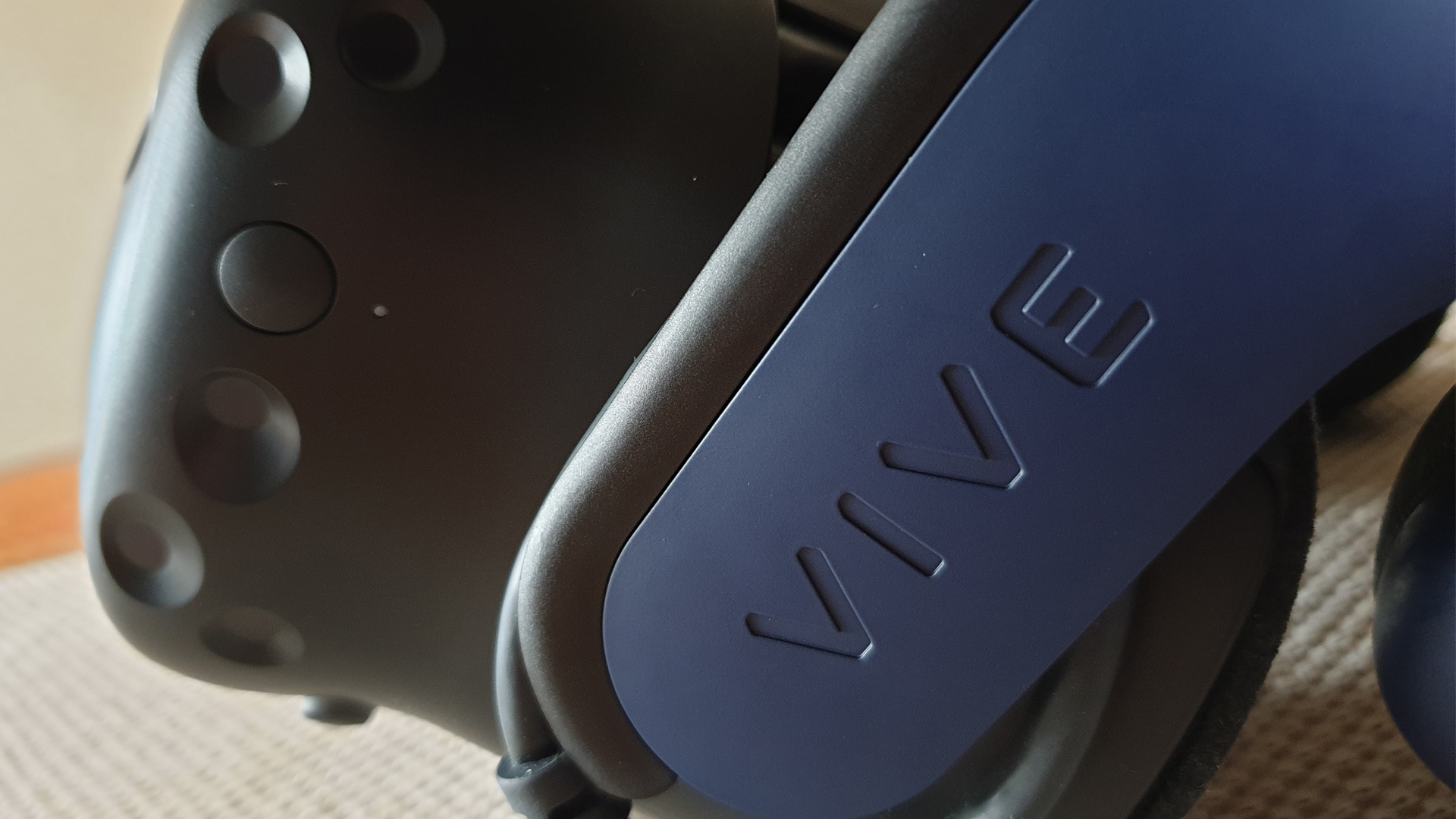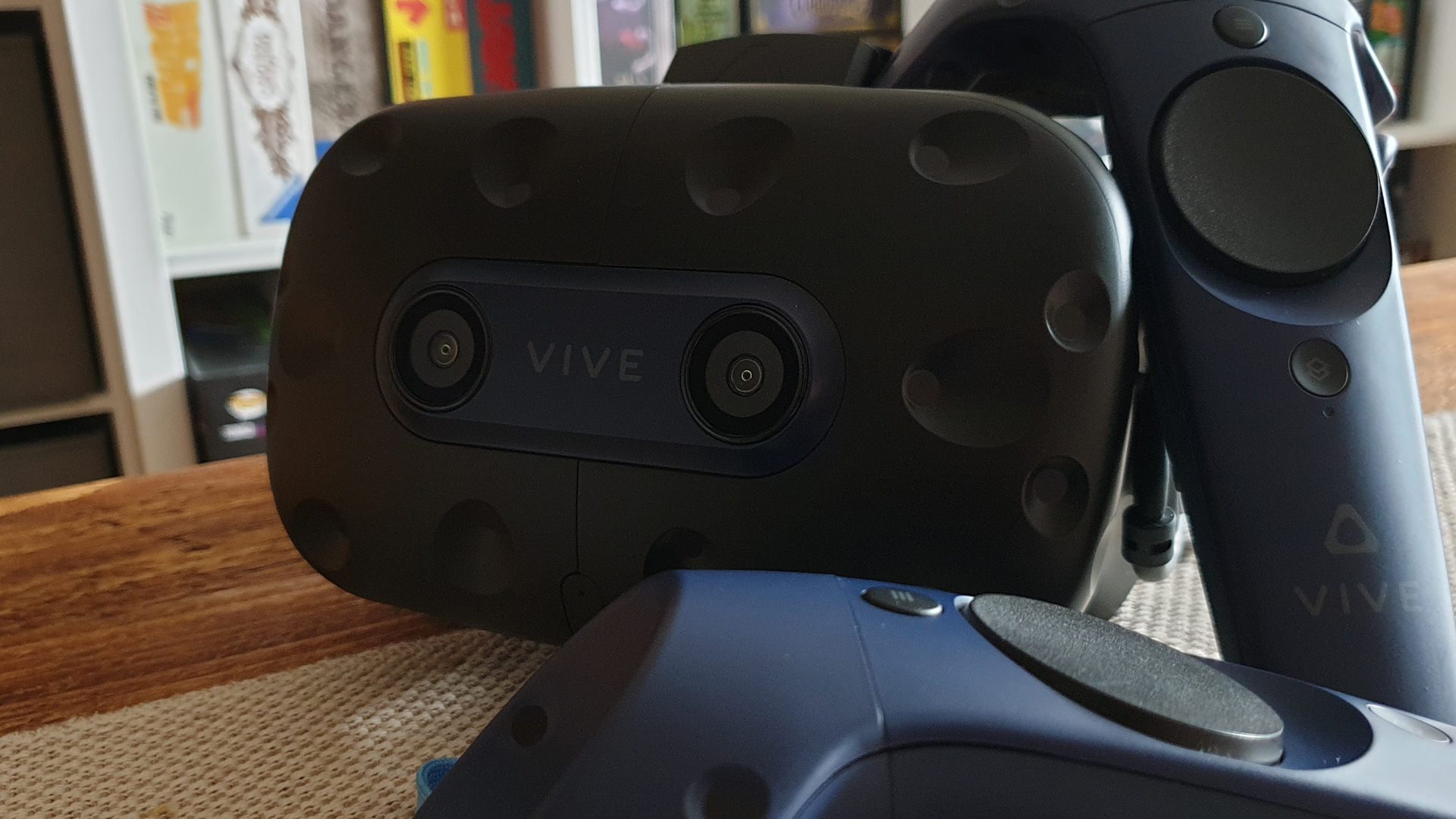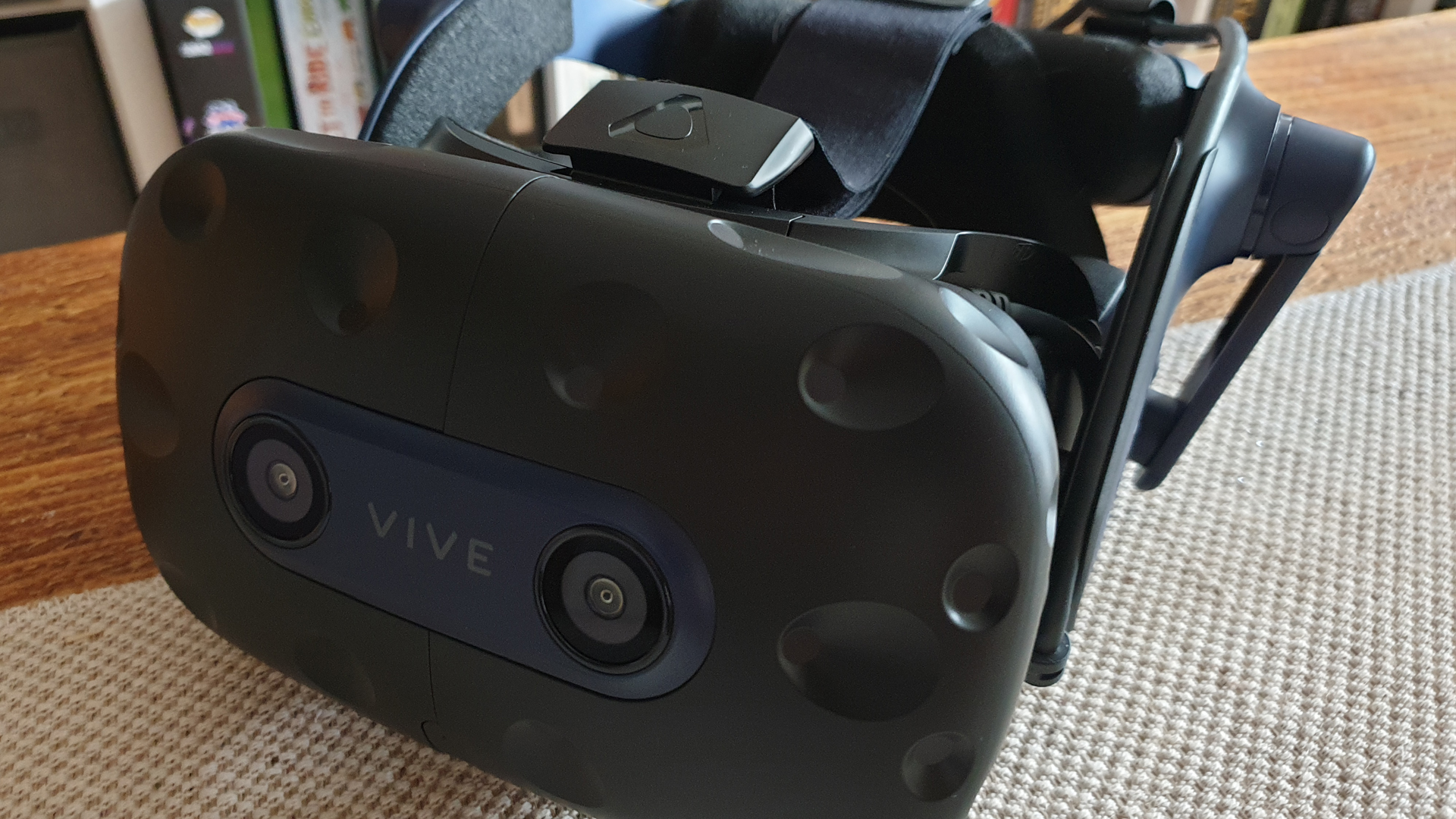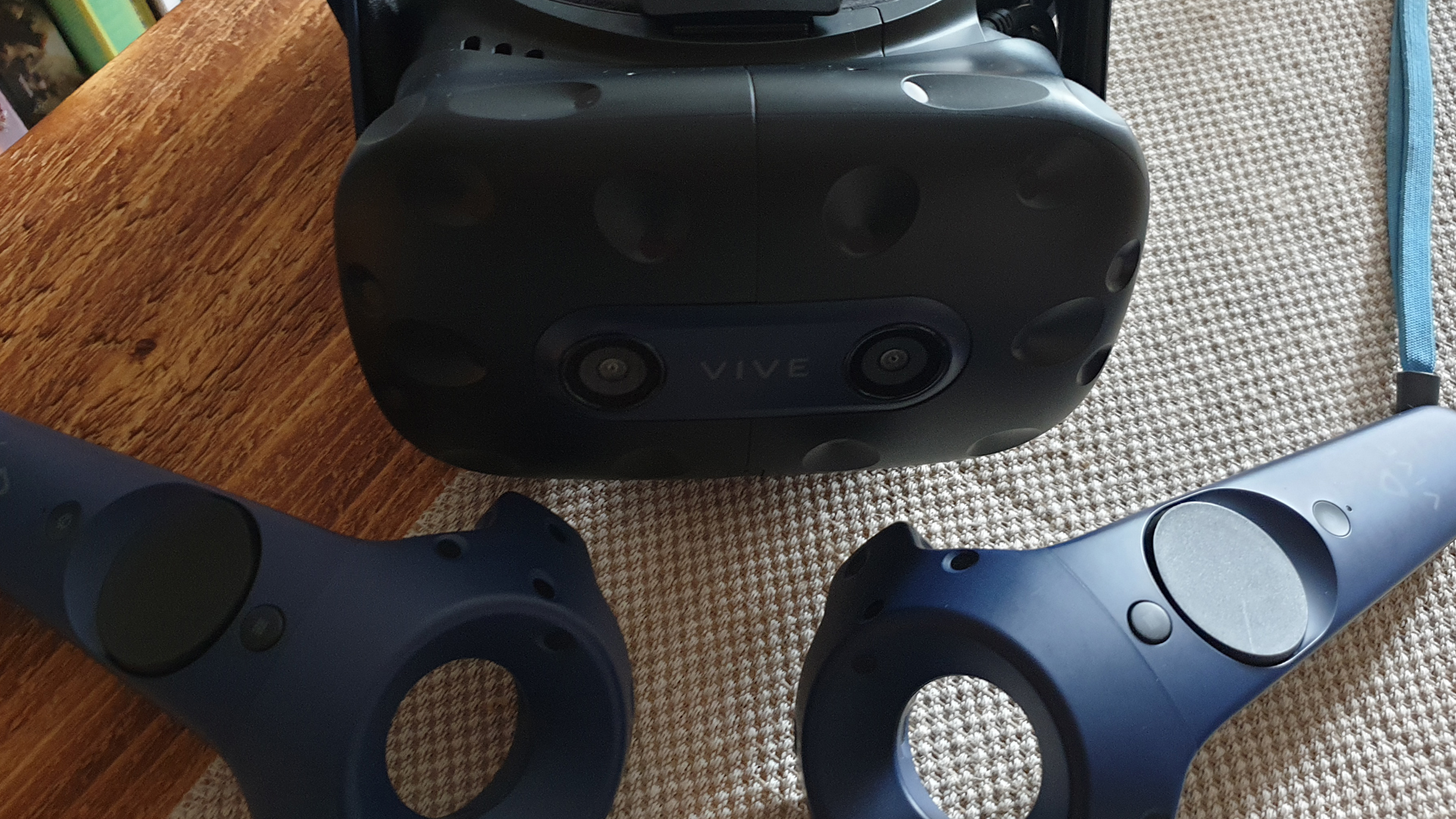GamesRadar+ Verdict
The HTC Vive Pro 2 provides a stunning VR experience - once you've got it set up properly.
Pros
- +
Incredible visuals
- +
120Hz display
- +
Surprisingly comfortable
- +
120° field of view
- +
Hi-Res certified 3D spatial sound
Cons
- -
The cost
- -
Requires calibration
- -
Gets incredibly hot
Why you can trust GamesRadar+
If you're sceptical about VR, I'd like to sit you down in front of the HTC Vive Pro 2. Most headsets hint at what virtual reality can do, but are held back by tech limitations. This one shows what happens when those limitations don't exist.
High-res visuals. 120Hz displays for smooth framerates. Base stations for more accurate tracking. In other words? It's enough to ensure that you're not putting up with a downgraded PC gaming experience for the novelty of VR. Sure, you pay for it in a very literal sense thanks to an enormous - and painful - price tag. Yet anyone who invests in the HTC Vive Pro 2 will enjoy peerless virtual reality.
Features

Screen: Dual RGB low persistence LCD
Resolution: 2448 × 2448 pixels per eye (4896 x 2448 pixels combined)
Refresh rate: 120Hz / 90Hz
FOV: Up to 120°
Speakers: Hi-Res certified headphones
Sensors: G-sensor, gyroscope, proximity, IPD sensor, SteamVR Tracking V2.0
This isn't a novelty; the HTC Vive Pro 2 goes all in on VR like a professional athlete. Take one look at its spec sheet and you'll know it means business.
To start with, the headset is fitted with a 120Hz display for smoother, less choppy visuals. The lenses also offer a '5K' resolution (2448 × 2448 pixels per eye, or 4896 x 2448 pixels combined) to go with a 120° horizontal field of view that feels more natural. It's sharper, more detailed, and downright more impressive than competitors like the Oculus Quest 2.
It's quite the immersive experience
Following up on this are Hi-Res certified headphones. Attached to the headset itself, they provide 3D spatial sound integration. When combined with the two base stations the Vive Pro 2 requires to work (these track your movements from afar) and a pair of controllers with SteamVR Tracking 2.0, it's quite the immersive experience.
To round out the feature-set, HTC Vive Pro 2 headsets offer adjustable interpupillary distance (IPD) so you can tailor the experience to your eyes. A G-sensor, gyroscope, and SteamVR Tracking V2.0 are also along for the ride.
Just remember, you'll need a powerful system with at least an RTX 2060 or AMD Radeon RX 5700 - not to mention an i5-4590 or AMD Ryzen 1500 processor - for the full experience. You can get away with less, but you won't be able to enjoy 120Hz or higher resolutions.
Design
If someone told me that the HTC Vive Pro 2 was a prop from a sci-fi movie, I'd be inclined to believe them. Thanks to numerous divots all over the front, there's something quite futuristic about it.

However, it's not heavy in spite of its bulk. While the build-materials are still fairly premium, they're lightweight as well. Relatively, anyway. You aren't going to feel too weighed down with it on, though it does require a lengthy cable that's attached to a Pro 2 Link Box (which is, in turn, attached to your PC or laptop).
Thanks to a generous amount of foam padding - including a removable one at the front that can be swapped out for cleaning - they're comfortable as well. This complements an ergonomic design that can be adjusted to fit pretty much anyone; a handy dial on the back tightens or loosens the whole thing. It's a-OK even if you wear glasses.
Performance
Let's get the downsides out of the way first, shall we? Simply put, the cost of the HTC Vive Pro 2 is eye-watering. With the base stations and controllers (that are essential for the headset to work), it'll set you back roughly $1,400 / £1,300. Although the product is astounding, that's a lot of money. You'll need a good rig to handle it, too.
What's more, the Pro 2 is a pain to set up. Even though its base stations are a strength that allow for more accurate tracking, they can be a nuisance to prepare. Unless you're going to wall-mount them (which is highly recommended), getting each one into position adds a fair chunk of prep-time before you've even started messing about with virtual reality. While you can use tripods instead, it's not an ideal long-term solution - particularly because the base stations, which are somewhat limited by the length of their power cable, need height to function correctly.
Similarly, it's worth noting that you'll need to spend a few hours adjusting the headset itself to your eyes. It took me a couple of days to figure out optimal settings to avoid blurriness, so factor that into your plans - it won't look stunning off the bat. Rather, the Pro 2's quality is revealed over time.

All that effort is worth it once you've got the headset figured out, though. Its two screens are some of the best - if not the best - in their field, and they eliminate the common Oculus or PSVR issue of fuzzy, low-res visuals. This is the ultimate virtual reality experience, and it shows off today's games as they're supposed to look. If you've got one of the best graphics cards and a good CPU, you'll reap the rewards of something stunning.
Star Wars Squadrons is the perfect example. The Vive Pro 2 dumps you into the cockpit of fighters many of us have dreamed of flying since we were kids, and it's transportive. Instruments and displays are portrayed with impressive clarity, and being able to look over your shoulder to see the seating area of Rogue One's U-Wing (or to feel hemmed in by the ceiling of a cramped Y-Wing bomber) is a bizarre feeling. Equally, being able to admire the game's scenery or interact with its characters 'up close' adds to a sense of place you simply don't get from a 2D screen. Plus, the Pro 2 actually helps in a tangible way - being able to look around freely whilst dogfighting is beyond useful, particularly for tracking enemies that are zipping all around you.
It's funny for something this simple to be so satisfying
Half Life Alyx is equally breath-taking, if not more so. The worn-down grime of City 17 looks incredible with the Pro 2's higher resolution, and it's here that the controller's accurate tracking excels. Being able to reach out, grab a marker pen, and feel the resistance through the handset as you scribble on a window is remarkable. So long as you've got the base stations set up correctly, tracking is seamless.
Vader Immortal impresses too. Despite being an Oculus and PSVR exclusive, downloading the Revive software gives you instant access to your Oculus library - and it works brilliantly. Once you've gotten used to the remapped controls (the HTC Vive controllers don't have thumbsticks, so you'll need to compensate with the trackpad), you can enjoy an experience that looks better than it ever has. In fact, it was so convincing that I legitimately flinched when a character flipped a table in front of me or blaster fire darted past my head. This is partially down to the development team's sense of story and pacing, of course, but a lot of it can be laid at the feet of how well the Vive Pro 2 performs in action. It's easy to forget that the headset itself is on after a while.
Combat sims like Until You Fall are also winners in this regard. Thanks to tracking that's as near one-to-one as makes no difference, you feel fully in control of weapons that only exist in digital form. Crushing power-ups in your gauntleted hand to release their energy via the controller's two side buttons is easy and natural, for example. It's funny for something this simple to be so satisfying.

The slight downside of tech this powerful is temperature. To be precise, the Vive Pro 2 pumps out a tremendous amount of heat during play, and you'll almost certainly feel sweaty after an hour or so of use. This isn't a tremendous problem, and it won't impact your enjoyment of the games, but I can definitely see the (thankfully removable) pads getting gross if you don't look after them.
This was an occasional issue for my glasses; they would steam up every now and then, impeding my vision and forcing me to remove the headset so I could clear them.
Yet I didn't mind the inconvenience. It was good enough in every other regard that I was eager to get back in as soon as possible.
Overall - should you buy the HTC Vive Pro 2?
If you have the money and a setup capable of running the Pro 2, you won't be disappointed. This is a jaw-droppingly good VR experience, and I'm not sure it can be matched.
Sure, it's very expensive and needs calibration to work its magic. But you get what you pay for. The HTC Vive Pro 2 is a top-tier virtual reality headset, and it's an applause-worthy piece of tech that kinda blew my mind.

I've been writing about games in one form or another since 2012, and now manage GamesRadar+'s tabletop gaming and toy coverage. You'll find my grubby paws on everything from board game reviews to the latest Lego news.



